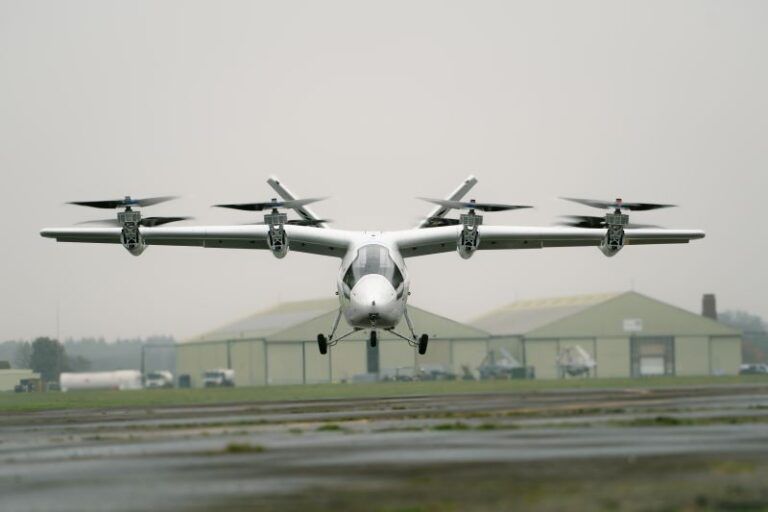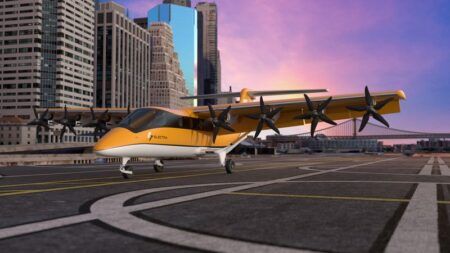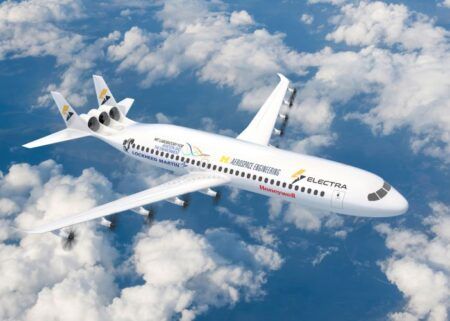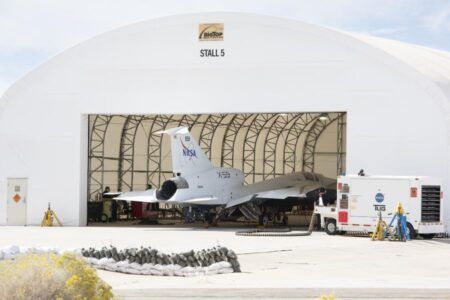Bristol, UK-based developer Vertical Aerospace has delayed the entry into service of its VX4 eVTOL aircraft from 2026 to 2028.
The two-year delay was announced in an update to investors this week that included an outline of the company’s plan to take the VX4 from “prototype to production” by 2030, given by Vertical’s CEO Stuart Simpson and chief engineer David King.
Certification of the VX4 eVTOL aircraft, which can carry four passengers up to 100 miles (160km) at speeds of around 150mph (240km/h), has already been pushed back once from 2025 to 2026.
Vertical’s new Flightpath 2030 strategy calls for a production ramp-up over two years after certification in 2028, and for the company to have delivered 150 VX4 aircraft by the end of 2029. The company is then targeting a production rate of 200 VX4s annually in the UK by the end of 2030.
Vertical has announced around 1,500 orders for the VX4.
“Legacy systems and processes do not encumber us. We can do everything in the best, fastest and most rigorous way possible as we create this new type of aircraft, always maintaining our focus on safety,” said Simpson.
Spare power
The company also plans to certify a major upgrade to the VX4 in 2030. Although not specified yet, the upgrade will most likely be extra capacity or range.
King said, “We aim to deliver the most powerful powertrain in the eVTOL industry. We are demonstrating that today in our second full-scale VX4 prototype, which has been shown to deliver 1.4MW of peak power, the same as an EC155 helicopter, which can accommodate 13 passengers.
“Power margin equals safety margin, especially for emergency conditions, but our first aircraft will also have excess power to allow for increases to the payload, the number of seats or range, with only minor changes and minor re-certificaiton required.”
VX4 flight testing progress
As of the first week of November, Vertical’s VX4 prototype is flying untethered at the company’s Flight Test Centre at Cotswolds Airport, UK after a series of tethered hover flights during the summer. Engineers are using data from the low-speed test flights to assess the aircraft’s stability, battery efficiency, control characteristics, aerodynamics, structural and dynamic loads and performance.
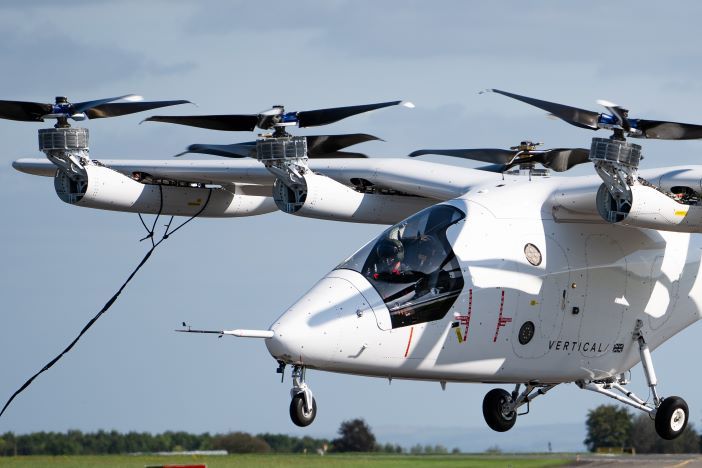
Simon Davies, chief test pilot, Vertical Aerospace said, “The aircraft performed brilliantly, and was stable in the hover. The flight controls felt good, and it’s great to have the tethers off. Everything on the aircraft worked perfectly – no surprises, nice and boring – a great test flight.”
King said, “We have been correlating the data with our models and have shown we have accurate forecasts for power margins and handling characteristics in the low-speed regime.
“We are also doing in depth testing of the integrated powertrain to prove that the architecture and components meet the safety standards for crash, vibration, shock, and thermal runaway. That has also led to the sizing of our batteries.”
The next phase of flight testing will see the prototype increase speed in wing-borne flight mode before the final crucial phase of piloted transition flight testing. This involves the aircraft first using its vertical propellers to take off and then switching to the higher-speed wing-borne flight mode in a single maneuver.
Test aircraft production
Vertical plans to start building its third full-scale prototype aircraft early next year and is planning the first flight of that aircraft (003) before the summer. Test aircraft 002 and 003 will used for envelope expansion, risk reduction, testing and public demonstration flights.
The company then plans to build six more test aircraft for use in the certification program. “These aircraft will be conformed to the type design that we are certifying with the CAA and conduct tests in parallel to prove that the aircraft meets all of its safety standards, including ground tests to prove its endurance and static and fatigue strength,” King said.
Vertical Aerospace’s first VX4 prototype crashed during a flight test in August 2023. A subsequent investigation revealed the cause was an adhesive bond failure on a propeller blade.
Vertical Aerospace funding
Speculation in the media has been rife recently that Vertical Aerospace, which employs around 350 people could run out of funding. According to reports, Vertical’s founder and main shareholder Stephen Fitzpatrick has held back the second half of a US$50 million investment promised in January while talks with US debt investor Jason Mudrick continue.
“We have never been closer to getting a deal,” King said, “We will raise funds in a consistent manner moving forward.
“The move from the entrepreneurial phase into a more rigorous and structured execution phase means making changes to the organizational structure, including bringing in people with manufacturing experience and an experienced program manager. We’re putting in a tightly controlled, rigorous focus structure and process to drive us going forward.”


